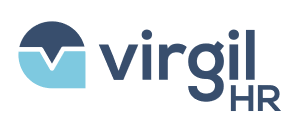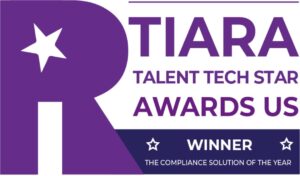Business leaders regularly rely on data to maximize the effectiveness of their organizations. To that end, HR analytics can enhance the way your company strategically leverages its human capital, ensuring that your employees stay engaged and thriving. And for HR professionals, such as yourself, that kind of data can help you make informed decisions about how teams are managed, influence your recruitment efforts, and help dictate your people strategy.
What Is HR Analytics?
HR analytics refers to the process of using business data to analyze the effectiveness of your human resource department. The technique relies on collecting, analyzing, and reporting on data to aid in corporate decisions and finding ways to improve the employee experience. Senior management can also use HR data to understand the impact of employees on the overall business performance.
Important HR Analytics
As an HR professional, you need to be able to identify which HR analytics matter to your organization. With that in mind, below are some examples of key HR metrics:
Revenue Per Employee
Revenue per employee is a measurement of how much money your organization takes in for every employee. For instance, if your organization earns $1 million each year and has ten employees, your revenue per employee comes to $100,000. This metric helps you influence the budget and future staffing plans and impacts your total reward strategy.
Turnover Rates
Turnover rates are a measure of the percentage of employees that leave the company, either voluntarily or involuntarily. If your company had a total of 50 employees, but then 10 left the company in the last year, your turnover rate would be 20% (the number of those who left divided by the original total, converted to a percentage). With the help of AI, you should consider leveraging exit interview notes to better improve the employee experience and reduce turnover by considering other areas of the people strategy, to include total reward, what’s shared with a candidate during the interview process, how candidates are vetted by interviewers, and people management, for example.
Time-to-Fill
Time-to-fill measures the number of days between advertising an open position and filling the role. For instance, if you post a job opening on January 1 and hire someone for it on February 28, your time-to-fill comes to 59 days. Understanding this metric allows you to develop strategies and initiatives that impact candidate experience, business performance, and cost to hire, for example.
Retention Rate
Your retention rate measures how long your employees remain at your business and is usually calculated on an annual basis. If, for example, you had 75 employees at the beginning of the last year and only five employees left since then, your retention rate is 93% (the number of remaining employees divided by the original total, converted to a percentage). Consider why some employees choose to stay longer with your organization and analyze patterns. Are you losing Gen Z employees? Think about why and leverage the data to influence your strategies.
Absence Rate
Your organization’s employee absence rate measures the total number of days an employee is absent from work for an unapproved reason (keep in mind that vacation time does not count toward absenteeism).
If a worker had 20 possible work days in a month, and they only worked 15 of those days, their absence rate comes to 25% (the five days they were out divided by the total of 20 possible workdays, once again converted to a percentage). This metric helps measure overall employee engagement and may be a reflection of employee sentiment.
Offer Acceptance Rate
Lastly, your offer acceptance rate is a ratio that measures how many people accept your job offers. For example, if you make 24 job offers and only 16 candidates accept, your acceptance rate is 67% (16 over 24). It’s possible that a low acceptance rate might be due to poor candidate experience, your overall compensation and benefits package, or your employer brand.
How to Leverage HR Analytics
Here are some tips on leveraging HR analytics to improve your organization’s performance:
Make Informed Decisions
HR analytics provides data needed to determine adequate employee compensation, training costs, and ways to improve employee performance across the organization. To that same end, HR professionals may be called upon to present data to senior managers, helping them see the impact of corporate decisions on the company’s workforce or how HR management impacts the company’s bottom line, giving you more leverage and influence with your leadership peers.
Predict Trends
HR analytics will also help you identify workforce trends and forecast future needs. For example, employee work patterns can highlight future needs, and even demographic data can clue you into the possibility of key personnel reaching retirement age. As a result, HR professionals can work toward restructuring their workforce in advance of these trends and manage succession planning to ensure long-term operational efficiency.
Improve Outcomes
Leveraging HR analytics will help you identify best practices for your organization and improve outcomes for your workforce as a result. HR analytics can also help you identify your highest-performing team members and determine the factors that contribute to their success. You might use that data to search for future employees with similar traits or use similar compensation strategies to motivate your other workers.
Adjust Recruiting Strategies
Harvard Business Review reports that companies are seeing turnover rates ranging from 50% to 80% higher than they’re used to. Your own company’s data may influence you to adjust your recruiting strategies to fill vital positions and keep these workers engaged and happy.
Adjusting your messaging for your recruitment marketing may also help you connect to a broader applicant pool, which provides a greater possibility for connecting to top talent in your next hiring decision.
Improve Employee Engagement
Data from Gallup’s State of the Global Workplace reveals that 85% of employees are not engaged in the workplace. Disengaged employees are not only less productive but more likely to search for employment elsewhere.
Harnessing HR analytics can help you identify areas of poor performance and make necessary adjustments to improve engagement. Even small changes to your company culture (be they more flexible work hours, professional development opportunities, or so on) can help your workers feel valued and more likely to remain long-term assets to your company.
Thriving Through Data
By leveraging HR analytics, HR professionals can improve the experience and performance of their fellow employees and contribute to a thriving company culture. Use your collected data to improve outcomes and adapt to long-term trends that help your organization flourish.






